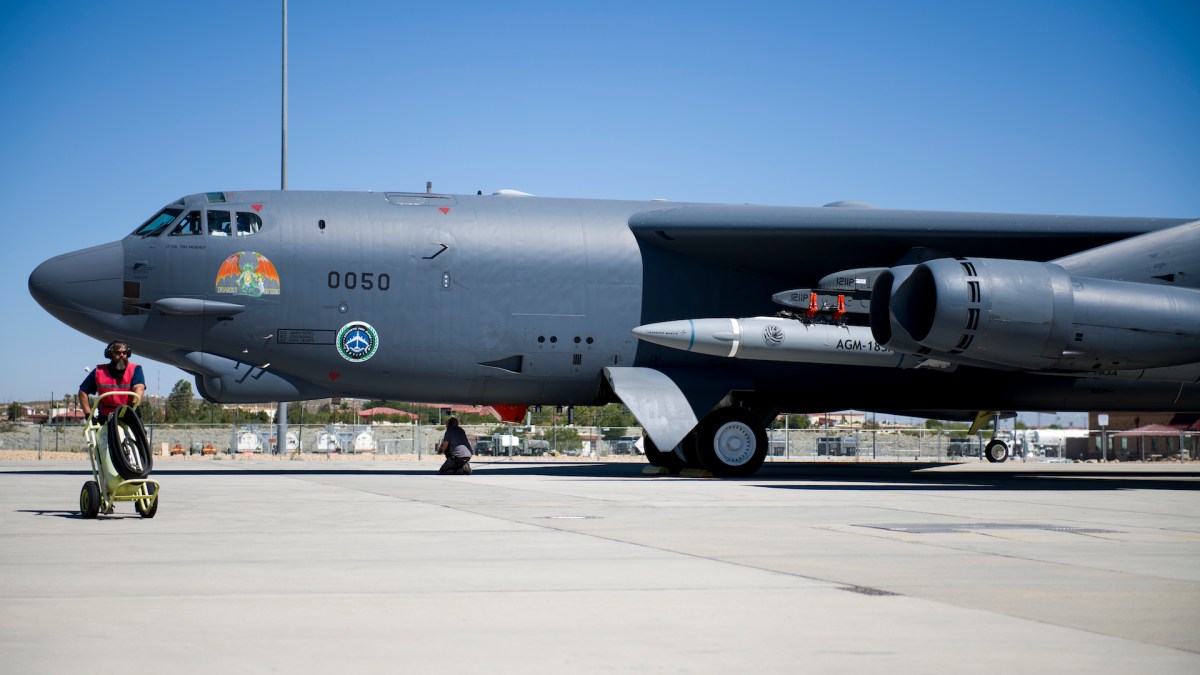MDA director on hypersonics testing: ‘We need to get into a faster clip’

With the Pentagon’s plans to field hypersonic weapons across multiple domains in the coming years, the head of the Missile Defense Agency is pushing for additional infrastructure to ramp up testing of the high-speed systems.
“We need to get into a faster clip of doing these tests, especially in the new stuff, to be able to really wring out the technology, but also to start beefing up the inventory levels [and] the capacity levels because, frankly, the hypersonics are too costly,” MDA Director Lt. Gen. Heath Collins said Thursday during an event hosted by the Center for Strategic and International Studies.
Development of hypersonic missiles and tools to defeat them, is a top modernization priority in the Defense Department, especially as adversaries like China and Russia mature their own versions of the technology. The weapons are able to reach speeds greater than Mach 5 and are highly maneuverable in-flight, making them difficult for traditional air defense systems to intercept them.
The Air Force, Navy and Army each have ongoing hypersonics programs, and a number of other efforts are in the works at the Defense Advanced Research Project Agency and other DOD organizations to advance the technology. However, a limited amount of adequate testing infrastructure has hindered overall development, Collins said.
With other programs, “you may launch dozens of dozens of weapons. But on the hypersonic side, we just have not been able to do that,” he said.
Data gathered from the department’s hypersonics tests can also support MDA’s efforts to develop capabilities to counter those types of systems.
Although the Pentagon operates a handful of ranges to test missiles, only one, located at Holloman Air Force Base in New Mexico, is long enough — over 50,000 feet — to test hypersonic weapons at speeds of Mach 5 or higher.
Another option is to launch the missiles over the open ocean. However, doing so makes recovery of the vehicles for further analysis extremely difficult.
Speaking at a House Armed Services strategic forces subcommittee hearing in March, George Rumford, director of the Pentagon’s Test Resource Management Center (TRMC), told lawmakers that the department is looking to upgrade the 70-plus-years-old track at Holloman, but doing so creates disruptions in missile testing. The Pentagon is also conducting an ongoing study to build additional tracks, he said.
Along with efforts to build more long-range corridors, there are two other major initiatives at the department to bolster the United States’ hypersonic testing capacity, Rumford told lawmakers.
That includes the Navy and TMRC’s Multi-Service Advanced Capability Hypersonics Test Bed (MACH-TB) program, which aims to prototype a modular flying test body that can validate subsystems and materials prior to integrating them onto platforms. The TMRC is also running the SkyRange program, which retrofits unmanned aerial vehicles so that hypersonic weapons can be tested in more locations.
While infrastructure is one bottleneck to moving forward with the systems, Collins emphasized during the CSIS event that the Pentagon needs to commit to funding its test programs for the weapons.
He said that it isn’t uncommon for programs to cut tests and equipment when funding gets tight, despite having already planned a full testing campaign.
“Off the cuff, I would say many of those ended up having to test more in the long run, but they ended up paying for more test assets later at more cost,” Collins said. “We’ve got to get farther up the cost curve, the efficiency curve by investing in the capacity to be able to do these kinds of weapons.”
There have been several new entrants into the hypersonics industrial base recently, which has helped the department improve its ability to test the missiles, he added.
In the near term, Collins said MDA is looking at how non-traditional defense contractors can provide targets for hypersonic weapons testing at a low cost.
“There is the commercial and venture capital space that are bringing hypersonic capabilities to bear, which is exciting because the costs of targets is an order of magnitude lower,” he said. “If we can get them to the point where they’re delivering capability that meets what we need in that intersection, that is going to be very powerful for us because our targets mean we can test more — and that is going to only help us in the long run.”






